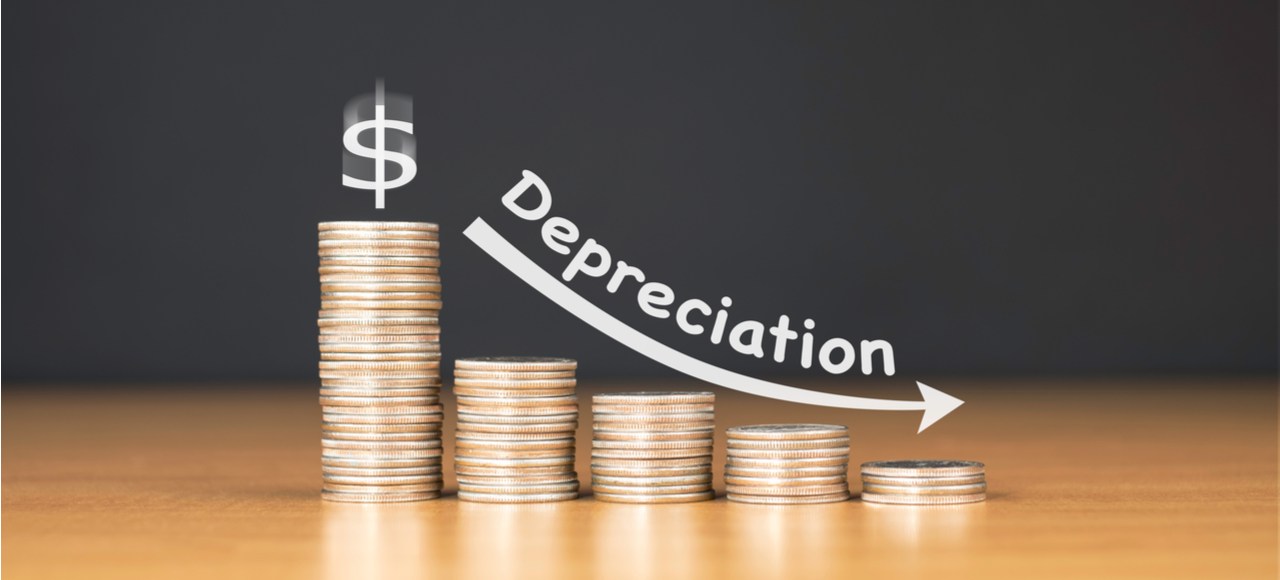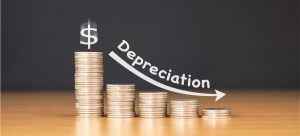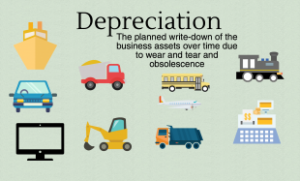Different Methods to Calculate Depreciation
Depreciation
The monetary value of an asset decreases over time due to use, wear and tear or obsolescence. This decrease is measured as depreciation. Depreciation, i.e. a decrease in an asset’s value, may be caused by a number of other factors as well such as unfavorable market conditions, etc. Machinery, equipment, currency are some examples of assets that are likely to depreciate over a specific period of time. Opposite of depreciation is appreciation which is increase in the value of an asset over a period of time.
Methods of Depreciation:
The four common methods of depreciation are:
- Straight-line
- Double declining balance
- Units of Production
- Sum of years digits
Straight-line Depreciation
This method is also known as fixed instalment method. Under this method, an equal amount is charged for depreciation of every fixed asset in each of the accounting periods. This uniform amount is charged until the asset gets reduced to nil or its salvage value at the end of its estimated useful life. Thus, the amount of depreciation is calculated by simply dividing the difference of original cost or book value of the fixed asset and the salvage value by useful life of the asset.
Double declining balance
This method is a mix of straight line and diminishing balance method. Thus, depreciation is charged on the reduced value of the fixed asset in the beginning of the year under this method. A fixed rate of depreciation is applied just as in case of straight line method. This rate of depreciation is twice the rate charged under straight line method. Thus, this method leads to an over depreciated asset at the end of its useful life as compared to the anticipated salvage value.
Therefore, companies adopt various approaches in order to overcome such a challenge. Firstly, the amount of depreciation charged for the last year is adjusted. This is done to make salvage value equal to the anticipated salvage value. Secondly, many companies choose to use straight line depreciation method in the last year to adjust the over depreciated salvage value.
Units of Production
Units of production assigns an equal expense rate to each unit produced, which makes it most useful for assembly or production lines. The formula involves using historical costs (the price of an asset based on its nominal or original cost when acquired by the company) and estimated salvage values. The method then determines the expense for the accounting period multiplied by the number of units produced.
Sum of years digits
The sum-of-the-years’ digits method offers a depreciation rate that accelerates more than the straight-line method but less than the declining balance method. Annual depreciation is separated into fractions using the number of years of the business asset’s useful life. Such assets may include buildings, machinery, furniture, equipment, vehicles, and electronics.
FACTECH AUTOMATION PVT LTD is a company which provides a wide range of services like, Preventive Maintenance, Asset Management, Maintenance of HVAC system etc. To know more about the services like these which are being provided by factech automation solutions, please visit the website factech.co.in














Leave a Comment